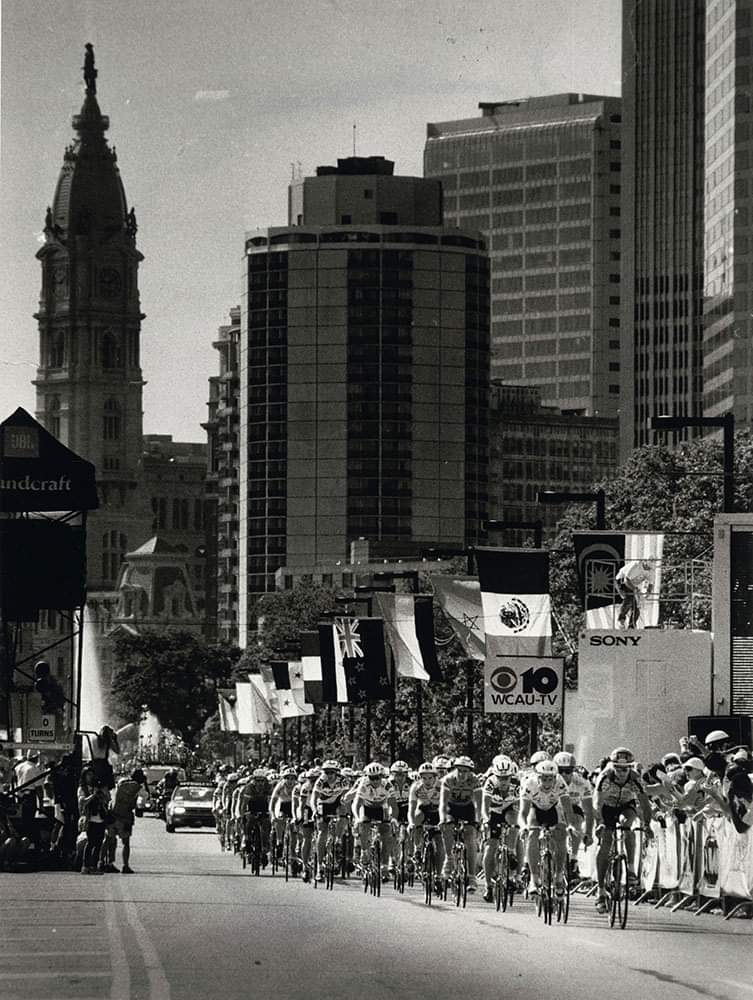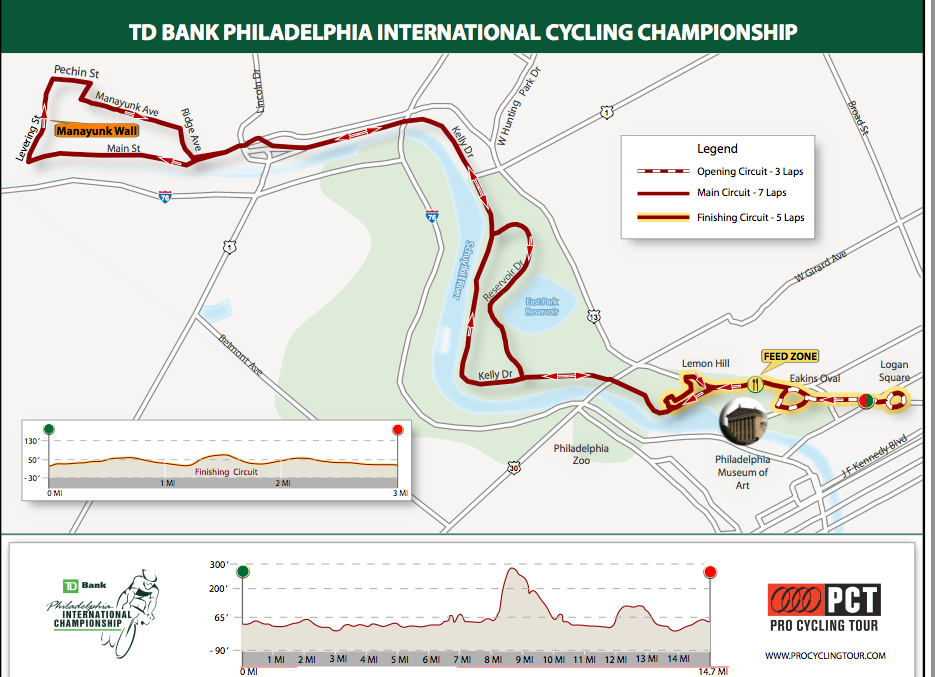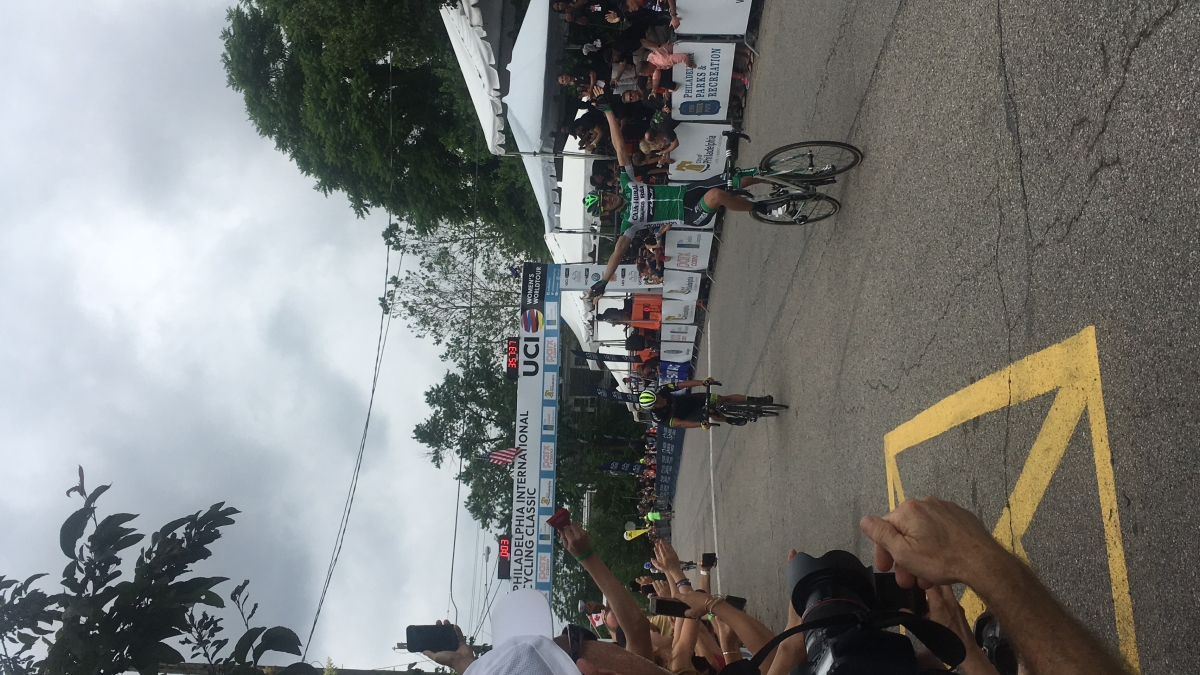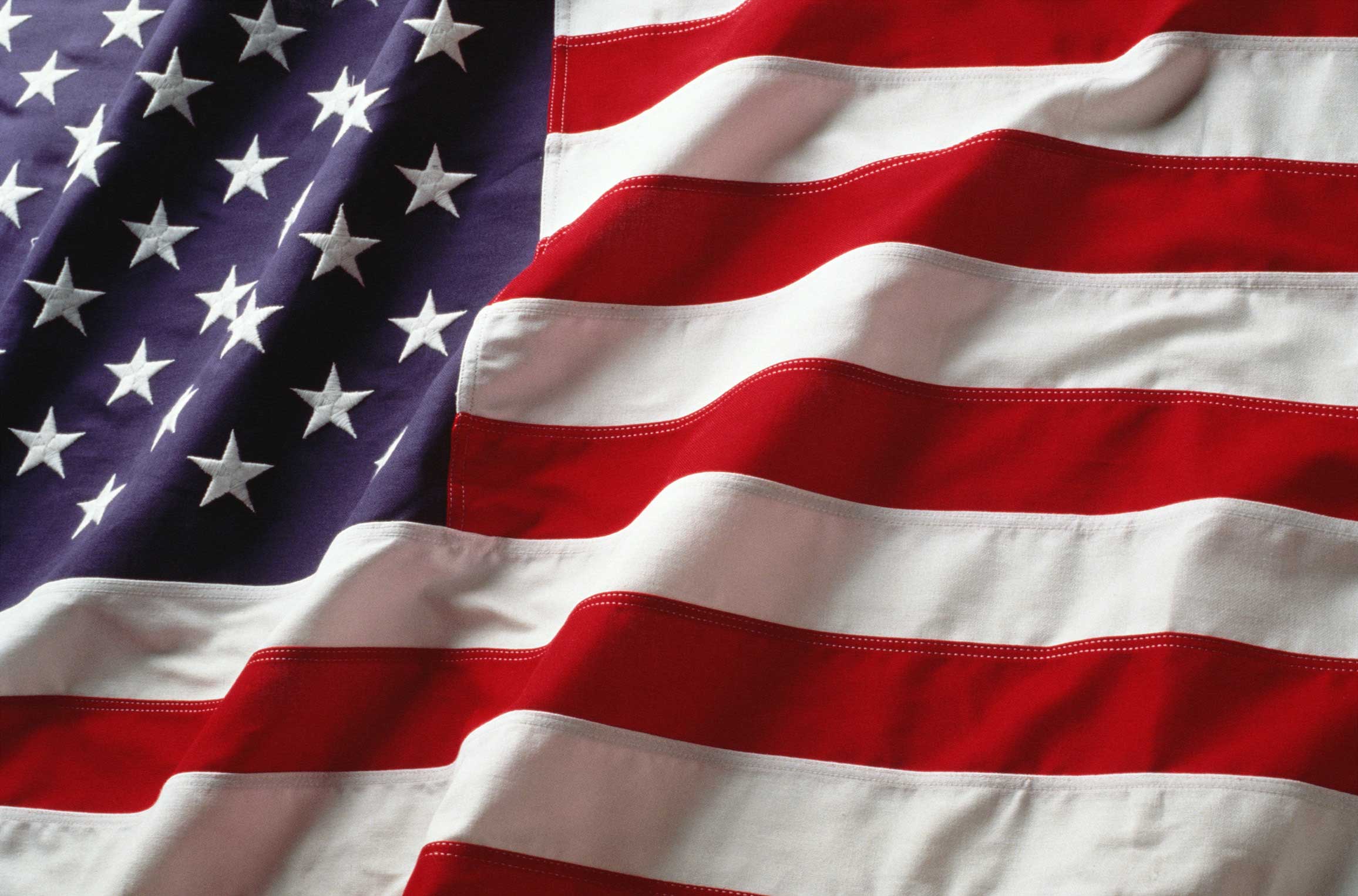Remembering the Philadelphia International Cycling Championship
Related Posts
- Buy Tickets for The Constitutional Walking Tour of Philadelphia – See 20+ Sites on a Primary Overview of Independence Park, including the Liberty Bell and Independence Hall
- Remembering the Liberty to Liberty Triathlon
- Ben Franklin Parkway
- Philadelphia Museum of Art
- Rocky Steps & Rocky Statue - Photo Opportunity
Forever and Fondly Remembered as the CoreStates Bike Race - R.I.P.
The "Founding Fathers" of the USPRO Championship in Philadelphia were Dave Chauner, Jack Simes and Jerry Casale. In 1985, this group of friends conceived their grand idea of having an authentic U.S. national championship road race. Setting the wheels in motion, they established the CoreStates U.S. Pro Cycling Championship, a 156-mile bicycle race through the streets of Center City, Fairmount Park and the hills of Manayunk. Over time, the CoreStates Bike Race (as many traditionalists still refer to it) changed its name numerous times, and eventually evolved into the Philadelphia International Cycling Championship.
In its inaugural year in 1985, Eric Heiden, former Olympic Gold Medalist in speed skating, won the first CoreStates Bike Race as part of 7-Eleven racing team.
A Signature Sporting Event in Philly
In 1985, there were only a few thousand fans who lined the route and cheered the racers on during the spectacle of biking. Year by year, the crowds steadily grew, and the CoreStates Bike Race was eagerly anticipated as one of the great annual sporting and block party events across Philly. By the early 1990s, there were more than 100,000 fans who had lined the 12.3 mile race course, cheered the cyclists on and rang cow bells as the riders passed by, lap after lap. The race quickly grew in popularity and became an iconic Philly sporting and social event, in part thanks to live TV broadcasts and radio coverage from WMMR-FM's Pierre Robert who followed along in a chase vehicle and brought the race to life. There were many block parties held all along the race course, and it was a party atmosphere throughout Philly every race day. Some said that the CoreStates Bike Race was like Philadelphia's version of the Indy 500 or Kentucky Derby. From 1985-2005, the CoreStates Bike Race served as the national championship for American cycling.

For many Philadelphians who fell in love with this annual sporting event during its first decade of existence from 1985-1994, the race will forever be known as the CoreStates U.S. Pro Cycling Championship, or simply the CoreStates Bike Race. Over the course of 30+ years, the title sponsor of the CoreStates Bike Race kept changing as banks were acquired and rebranded. The title sponsors of the "CoreStates Bike Race" in Philadelphia were as follows:
1985-1997: CoreStates U.S. Pro Cycling Championship
1998-2001: First Union U.S. Pro Cycling Championship
2002-2005: Wachovia U.S. Pro Cycling Championship
2006-2007: Commerce Bank U.S. Pro Cycling Championship
2008-2012: TD Bank U.S. Pro Cycling Championship
2013-2014: Parx Casino Philly Cycling Classic
2015-2016: Philadelphia International Cycling Classic
The Route
The CoreStates Bike Race traversed a grueling and picturesque route. Originally, the race started on the Benjamin Franklin Parkway, and then headed onto Kelly Drive into the Northwest section of the city, through the East Falls, Manayunk and Roxborough neighborhoods. The route then returned to the Ben Franklin Parkway and Logan Circle to complete its loop, passing parts of Fairmount Park (Lemon Hill and Boathouse Row) along the way. The route was approximately 12.3 miles in length along a circuit course with a large stretch of the race taking place along scenic Kelly Drive, the Schuylkill River and the Ben Franklin Parkway, including right in front of the Rocky Steps and Rocky Statue at the Philadelphia Museum of Art.
The Manayunk Wall
The infamous "Manayunk Wall" or simply "The Wall" referred to the part of CoreStates Bike Race on Levering Street and Lyceum Avenue in the Manayunk neighborhood in the Northwest section of Philadelphia. The Wall began at the intersection of Main Street and Levering Street, and it proceeded up the cobblestone Cresson Street under the elevated Septa regional rail line, then back onto Levering Street. Most of The Wall was located on Levering Street, but The Wall entered Lyceum Avenue at Tower Street. The steepest section of The Wall challenged riders with a 17 percent grade that commenced just after the slight left turn when going uphill at the intersection with Tower Street, and ended at the intersection with Fleming Street. The Wall became less steep on the stretch as it crossed Manayunk Avenue. The Wall nearly flattened out and ended at Pechin Street in Roxborough. The right turn off of Lyceum Avenue onto Pechin Street began what was known as "The Fall from the Wall."
Given the symbolic importance of The Wall and its neighborhood touch point as the pride of Manayunk, some people, especially second generation fans of the event during the period of 2013-2016, started referring to the CoreStates Bike Race and Philadelphia International Cycling Classic as simply The Manayunk Bike Race.
As the CoreStates Bike Race evolved over the years and was scaled back due to funding constraints, the iconic top of the Manayunk Wall became both the starting and finish lines.

The Triple Crown of Racing's $1.0 Million Prize
In 1993, the CoreStates Bike Race was the culminating part of professional bicycling's Triple Crown series consisting of the Thrift Drug Classic in Pittsburgh and the Kmart Classic in West Virginia. There was a special opportunity with a $1.0 million bonus prize offered for any competitor who could win all three races in the same year. In 1993, Lance Armstrong was a young professional racer on the Motorola team and at that time, he was relatively unknown to most people. Heading into the 1993 CoreStates Race, Armstrong had won the Thrift Drug Classic and Kmart Classic earlier that same year, and Armstrong was poised to claim the $1.0 million in prize money if he could win in Philly. Armstrong used The Wall strategically, launching a brutal attack on the last leg up the climb which turned out to be Armstrong's "million dollar move," and he was the champion of the CoreStates Bike Race that year.
According to the Philadelphia International Cycling Championship History article by the Pro Cycling Tour,
"In 2012, it was revealed that Lance Armstrong and many of his teammates on the U.S. Postal Service team had been involved in a doping scandal throughout most of Armstrong’s career. Although he and his teammates had never tested positive at the Philadelphia race, several admitted that they had doped during this period."
The Beginning of the End in 2012
Unfortunately, the cancellation in 2012 by TD Bank of its title sponsorship marked the beginning of the end for the "CoreStates Bike Race." There was a constant search for sponsors thereafter, coupled with the fact that the City of Philadelphia kept increasing costs to race organizers for police, street cleaning and street closures.
In 2013, Parx Casino stepped up and sponsored a smaller and less expensive version of the race - the Parx Casino Philly Cycling Classic that was held on June 2, 2013. U.S Representative Bob Brady worked tirelessly to save the race. Nonprofit Liberty Sports Development was established to run the race. The Parx Casino Philly Cycling Classic was held again in 2014, but attendance was dwindling and interest waned in part because of the threatened cancellations of the annual race due to a lack of funding.
In 2015, the City of Philadelphia announced that it would be taking "ownership" of the race, and the City assumed all financial risk and cost, and renamed it as the Philadelphia International Cycling Classic. In an email dated February 9, 2015, Liberty Sports Development partners Richard Adler and Alan Morrison stated,
“During the past two years, we proudly invested our time, reputation, personal funds and passion to launch a new tradition of world class cycling to Philadelphia. Our momentum following the 2014 event was stronger than ever, with another great team effort lauded by the Philadelphia region and the international cycling community. We were fully devoted to continue investing and growing the event for the long term and had every expectation that would be the case. Unfortunately, city officials chose to pursue another path and, with only four months to go to the 2015 event, they have made the decision to take 100 percent of the financial risk to produce the event and have removed us from any involvement. We wish them well.”
2016 was the last year that the Philadelphia International Cycling Championships was held, and unfortunately, a great Philly tradition was lost just like the Liberty to Liberty Triathlon, which also started in the 1980s. The Liberty to Liberty Triathlon was an annual event held on the Fourth of July where racers started at the Statue of Liberty in New York and ended at the Liberty Bell in Philadelphia in a grueling test of swimming, running and cycling.

According to the Philadelphia International Cycling Championship History article by the Pro Cycling Tour, Michael Aisner, the popular race announcer for at least 28 years of the Championship from 1985-2012 summarized the "CoreStates Bike Race" as follows:
“The Philly race series has been a model sporting event on the American landscape, whose greatness touched nearly three decades and millions of fans. Model in every way: exemplary television coverage, as a day that became an integral part of a city's very personality, a catalyst to gentrify a Philly community at Manayunk, a rich and valued platform for sponsors to intersect with and attract new consumers, and a premier showcase for some of the greatest athletes on earth. Philly as host of one of the greatest annual American sporting events has been the benefactor of everything a city could ever desire.”



